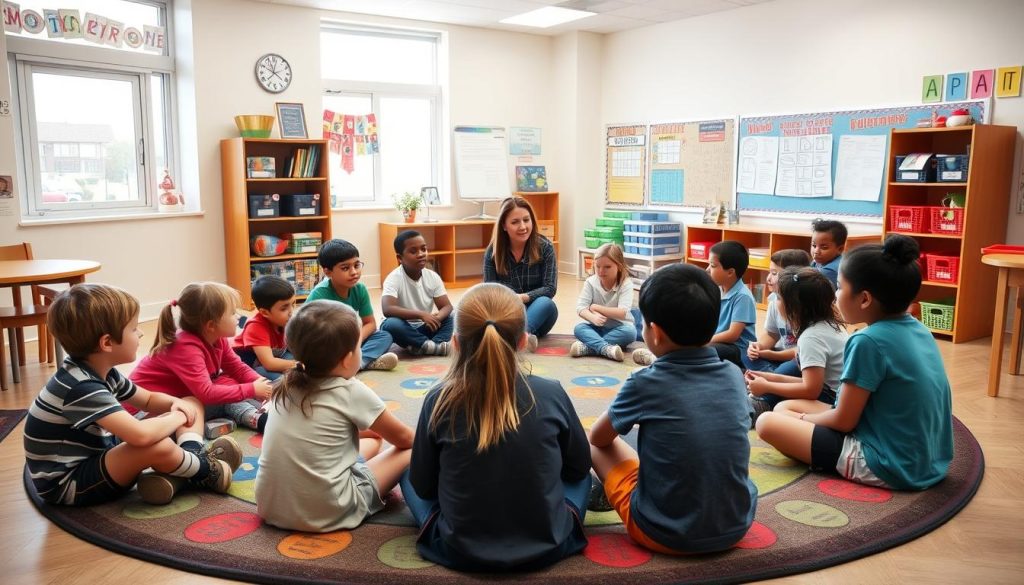Building classroom community creates a foundation for effective learning
Why Community Building Matters in Today’s Classrooms
In an era of increasing academic pressure and social challenges, intentional community building has never been more important. When students feel they belong to a supportive classroom community, they’re more likely to participate actively, take academic risks, and develop crucial social-emotional skills. Effective classroom management becomes less about discipline and more about creating an environment where students regulate their behavior because they feel invested in the community’s success.
Research consistently shows that strong classroom communities lead to:
- Improved academic performance
- Reduced behavioral issues
- Higher student engagement
- Better attendance rates
- Increased student confidence
- Enhanced social-emotional development
Professional development in community building techniques equips teachers with valuable teacher skills that extend beyond classroom walls. These approaches don’t just make teaching more effective—they make it more rewarding. Let’s explore eight powerful strategies you can implement immediately.
Community Building Strategy #1: Morning Meeting Rituals
Starting each day with a structured morning meeting creates consistency and sets a positive tone. This community building practice provides students with predictable routines while creating space for meaningful connection.
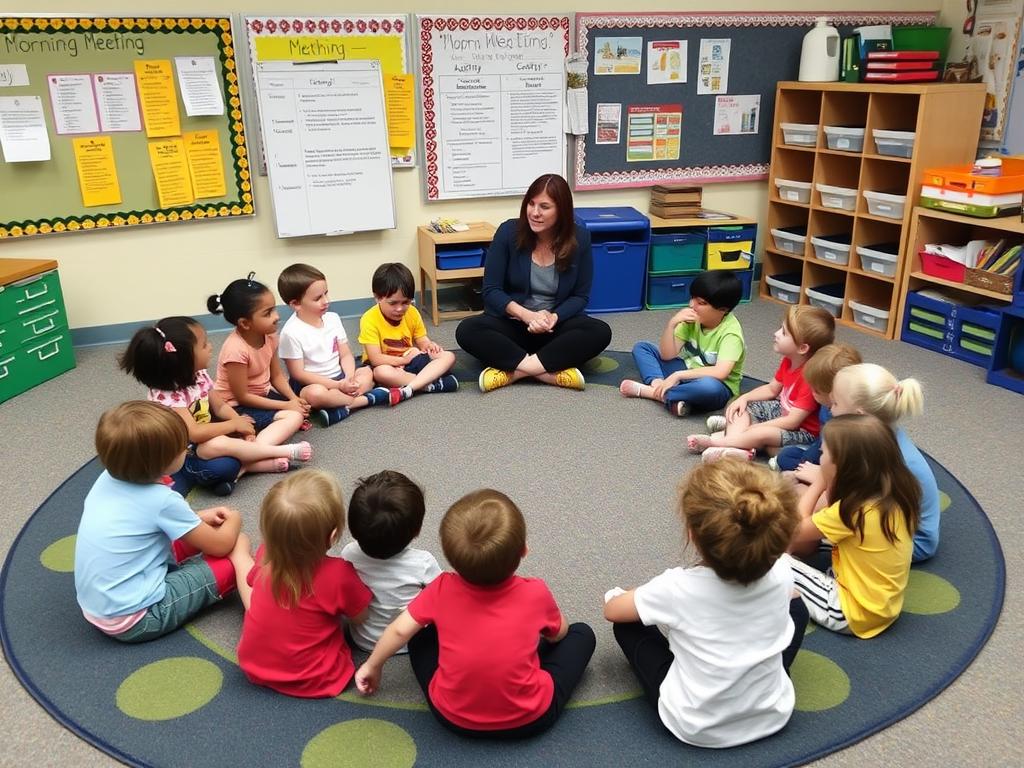
How to Implement Effective Morning Meetings:
Components to Include:
- Greeting: Students acknowledge each other by name
- Sharing: Students share information about their lives
- Group Activity: A brief, inclusive activity that builds community
- Morning Message: Written communication that sets the tone for learning
Teacher Skills Developed:
- Facilitation of student-centered discussions
- Responsive classroom management techniques
- Observation of student social dynamics
- Integration of social-emotional learning
Morning meetings don’t need to be lengthy—even 15 minutes can transform your classroom culture. This community building ritual helps students transition into the learning environment while practicing important social skills. As a classroom management tool, morning meetings establish expectations for how community members interact throughout the day.
“When I implemented morning meetings, I saw immediate improvements in how students treated each other. Our classroom management issues decreased significantly because students felt more connected to each other and to our shared expectations.”
— Jamie T., 4th Grade Teacher
For teachers looking to enhance their professional development in this area, specialized courses on morning meeting facilitation can provide additional structure and ideas.
Community Building Strategy #2: Collaborative Learning Structures
Intentional collaborative learning goes beyond simply putting students in groups. Effective community building through collaboration requires thoughtful planning, clear expectations, and structures that ensure every student contributes meaningfully.
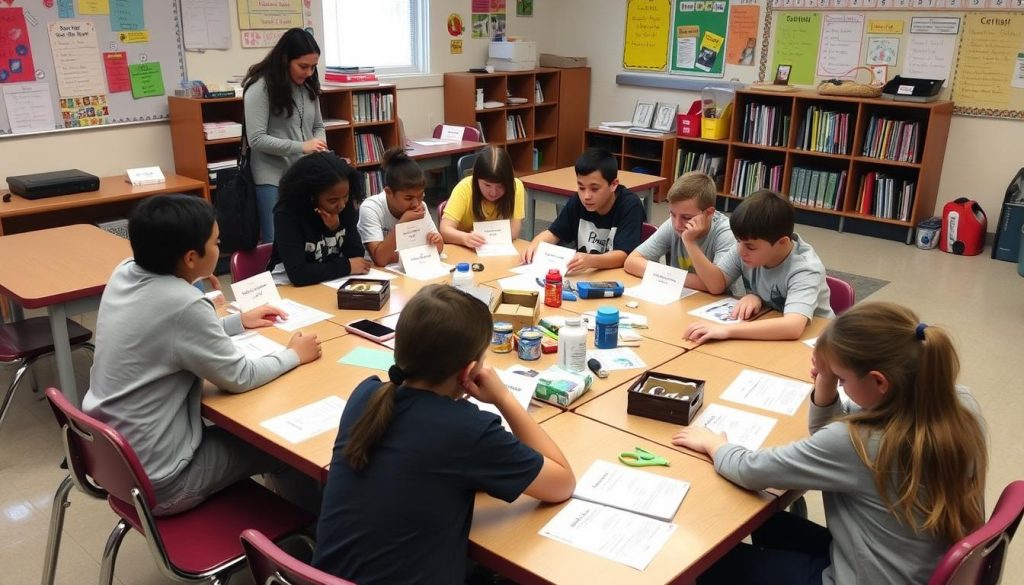
Collaborative Structures That Build Community:
- Jigsaw Groups: Students become “experts” on content and teach others
- Think-Pair-Share: Students think independently, discuss with a partner, then share with the class
- Gallery Walks: Students rotate through stations to view and respond to others’ work
- Literature Circles: Students take on specific roles to discuss texts
- Project-Based Learning: Students collaborate on authentic tasks with shared outcomes
These structures require students to practice communication, compromise, and mutual support—all essential elements of community building. They also provide natural opportunities for classroom management through clear role assignments and expectations.
Enhance Your Collaborative Teaching Skills
Looking for ways to implement effective discipline within collaborative structures? Our specialized course provides practical strategies for meeting diverse learning needs while building classroom community.
Effective teacher skills for facilitating collaboration include careful grouping strategies, clear instruction delivery, and the ability to monitor multiple groups simultaneously. These skills develop through intentional professional development and classroom practice.
Community Building Strategy #3: Class Agreements Instead of Rules
Traditional classroom rules are often teacher-imposed and framed negatively. In contrast, community building through collaborative class agreements empowers students as stakeholders in creating their learning environment. This approach transforms classroom management from enforcement to shared responsibility.
Creating Effective Class Agreements:
- Facilitate a discussion about what helps students learn best
- Ask students to frame agreements positively (what to do vs. what not to do)
- Ensure agreements address how community members treat each other
- Have students sign the final agreement document
- Revisit and revise agreements periodically
This community building approach develops critical teacher skills in facilitation and democratic classroom management. It also provides authentic opportunities to discuss values like respect, responsibility, and cooperation.
“When my students created our class agreements together, they took ownership of our classroom culture in ways I’d never seen before. Their input transformed my classroom management approach and deepened our sense of community.”
— Michael R., Middle School Teacher
Class agreements serve as touchstones throughout the year, providing language for addressing conflicts and reinforcing positive behaviors. This community building strategy creates a foundation for restorative practices rather than punitive discipline.
Community Building Strategy #4: Identity-Affirming Activities
Strong classroom communities celebrate the diverse identities and experiences of all members. Identity-affirming activities help students recognize their own unique qualities while appreciating those of their classmates. This community building approach creates a foundation of mutual respect and understanding.
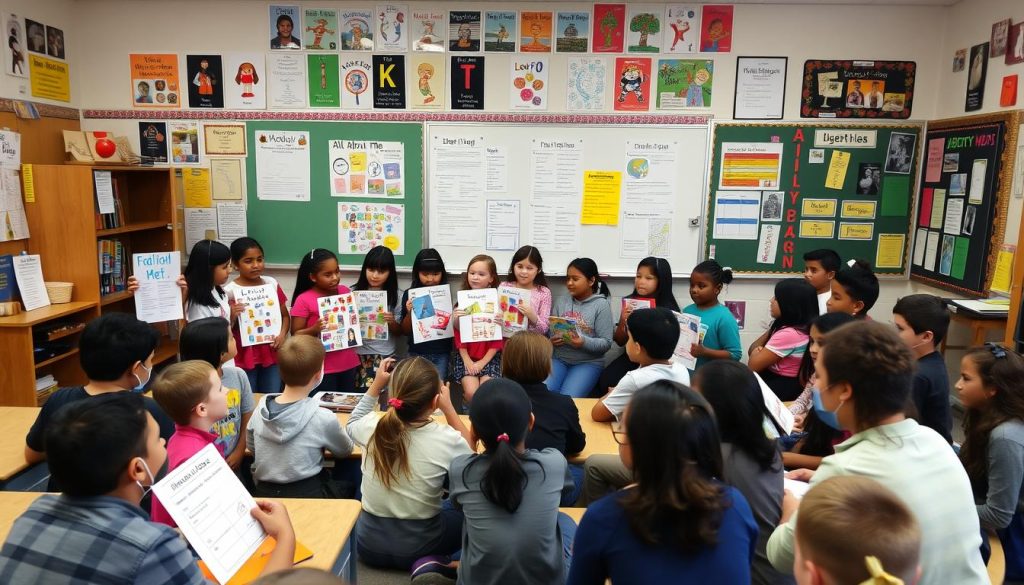
Identity-Affirming Activities for Community Building:
For Elementary Students:
- “All About Me” bags or boxes
- Family heritage sharing
- Name stories and celebrations
- Self-portrait projects
For Secondary Students:
- Identity maps or webs
- Cultural autobiography writing
- Personal values exploration
- Strength-based interviews
These activities require sensitive facilitation—a crucial teacher skill that develops through professional development and practice. Effective classroom management during identity work includes establishing clear guidelines for respectful listening and appropriate questions.
When students feel their identities are affirmed in the classroom community, they’re more likely to engage academically and contribute positively to the learning environment. This community building approach supports both social-emotional and academic goals.
For teachers looking to deepen their understanding of culturally responsive community building, specialized professional development courses can provide valuable insights and strategies.
Community Building Strategy #5: Classroom Jobs and Shared Responsibility
Distributing classroom responsibilities through a jobs system gives students meaningful roles in maintaining their learning community. This community building strategy helps students develop a sense of ownership and pride in their classroom while practicing important life skills.
Implementing an Effective Classroom Jobs System:
- Create meaningful jobs that contribute to classroom functioning
- Ensure jobs are accessible to students of all ability levels
- Rotate responsibilities regularly
- Provide clear training for each position
- Acknowledge students’ contributions to the community
This approach to community building supports classroom management by distributing responsibility and reducing teacher workload. It also helps students develop important teacher skills like organization, leadership, and reliability.
Classroom Job Ideas Across Grade Levels
Elementary:
- Line leader
- Calendar helper
- Plant caretaker
- Library manager
- Attendance helper
Secondary:
- Discussion facilitator
- Technology assistant
- Materials coordinator
- Current events reporter
- Peer tutor
Classroom jobs systems require thoughtful planning and consistent implementation—skills that teachers develop through professional development and experience. When implemented effectively, this community building strategy creates a classroom that functions as a true community of learners.
Community Building Strategy #6: Celebration Rituals
Regular celebrations acknowledge both individual and collective achievements, reinforcing positive behaviors and creating shared memories. These community building moments help students recognize progress and feel valued within their classroom community.
Types of Classroom Celebrations:
- Academic Milestones: Completing projects, mastering skills, reaching goals
- Effort Recognition: Acknowledging persistence, improvement, and growth mindset
- Community Achievements: Meeting class goals, demonstrating values, working together
- Personal Milestones: Birthdays, personal accomplishments, acts of kindness
Effective celebration rituals require thoughtful classroom management to ensure they’re inclusive and meaningful. This community building practice helps teachers develop skills in recognizing diverse forms of achievement and creating equitable recognition systems.
“Our Friday celebration circle transformed our classroom culture. Students began noticing and appreciating each other’s contributions in ways they hadn’t before. These moments of community building became something everyone looked forward to each week.”
— Sarah L., 3rd Grade Teacher
Celebrations don’t need to be elaborate or time-consuming. Simple rituals like appreciation circles, success shout-outs, or displayed work with positive feedback can have powerful effects on classroom community. These practices align with professional development in positive behavior support and growth mindset approaches.
Community Building Strategy #7: Restorative Practices
When conflicts arise—as they inevitably will—restorative practices provide a community building approach to resolution. Rather than focusing on punishment, restorative approaches help students understand the impact of their actions, take responsibility, and repair relationships.
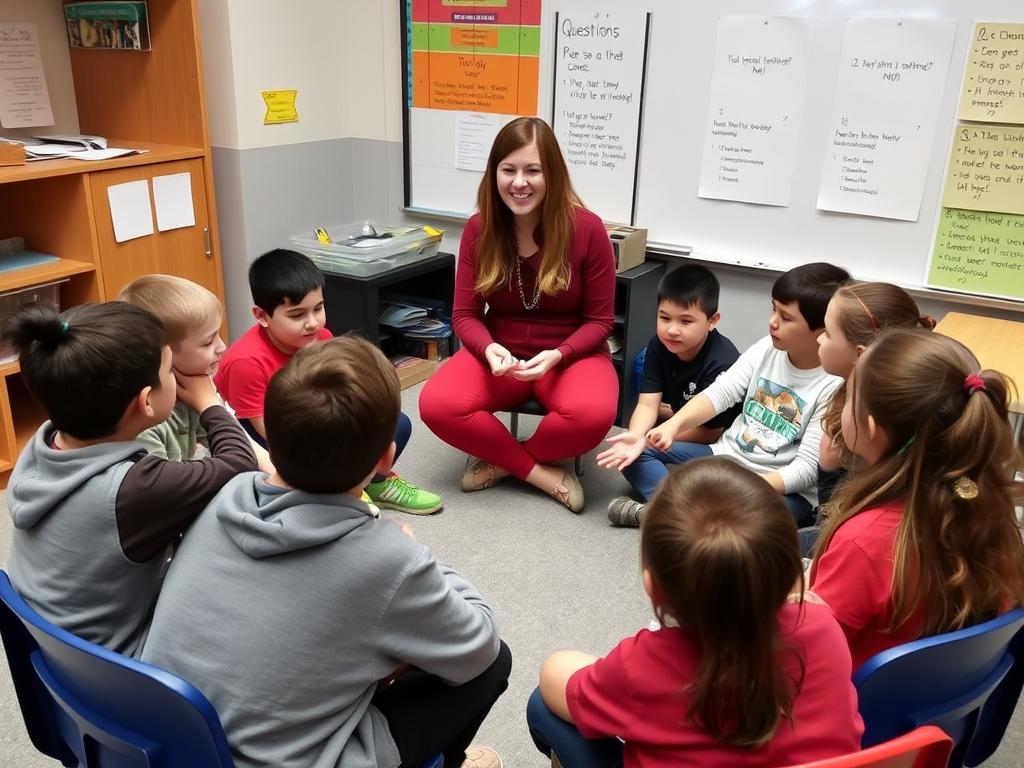
Core Restorative Practices for Classroom Communities:
- Restorative Circles: Structured dialogue for addressing issues as a community
- Affective Statements: “I feel…” statements that express impact
- Restorative Questions: “What happened? Who was affected? How can we make things right?”
- Collaborative Problem-Solving: Working together to find solutions
- Relationship Repair: Structured opportunities to rebuild trust
Implementing restorative practices requires specific teacher skills that develop through professional development and practice. These approaches align with modern classroom management philosophies that emphasize relationship-building over punishment.
Deepen Your Restorative Practices Skills
Our comprehensive course on restorative approaches provides practical strategies for building community through conflict resolution. Earn professional development credits while transforming your classroom management approach.
Restorative practices strengthen classroom community by teaching students that mistakes are opportunities for growth and that relationships can be repaired. This community building approach creates a foundation of trust and psychological safety essential for learning.
Community Building Strategy #8: Service Learning Projects
Service learning connects classroom content with authentic community needs, creating powerful learning experiences that extend beyond school walls. These projects build classroom community through shared purpose while developing students’ sense of agency and civic responsibility.
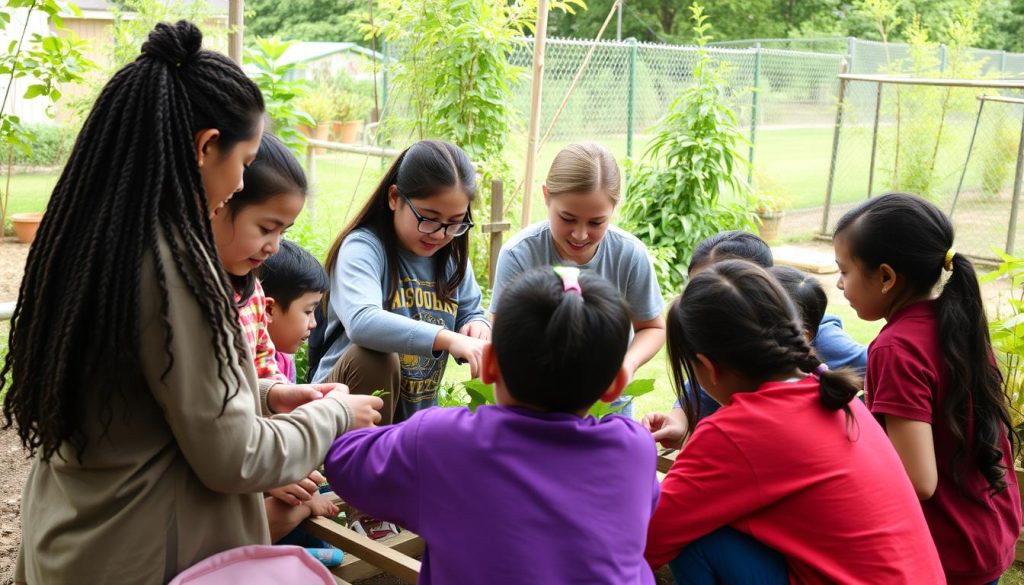
Implementing Effective Service Learning:
- Connect projects to curriculum standards and learning objectives
- Involve students in identifying community needs
- Ensure projects are developmentally appropriate
- Include reflection components before, during, and after service
- Celebrate the impact of students’ contributions
Service learning requires complex teacher skills in project management, community partnership development, and facilitation of reflection. These skills develop through professional development and collaborative planning with colleagues.
Elementary Service Learning Ideas:
- School beautification projects
- Letters to seniors or veterans
- Food drives with math integration
- Environmental monitoring
Secondary Service Learning Ideas:
- Oral history projects
- Community needs assessment
- Public awareness campaigns
- Peer tutoring programs
Service learning strengthens classroom management by engaging students in meaningful work with clear purpose. This community building approach helps students see themselves as capable of making positive change—a powerful motivator for engagement.
For teachers interested in implementing service learning, resources on differentiating instruction can help ensure projects are accessible to all students.
Implementing Community Building Strategies: Practical Tips
Integrating these community building approaches into your teaching practice requires intentional planning and consistent implementation. Here are practical tips for success:
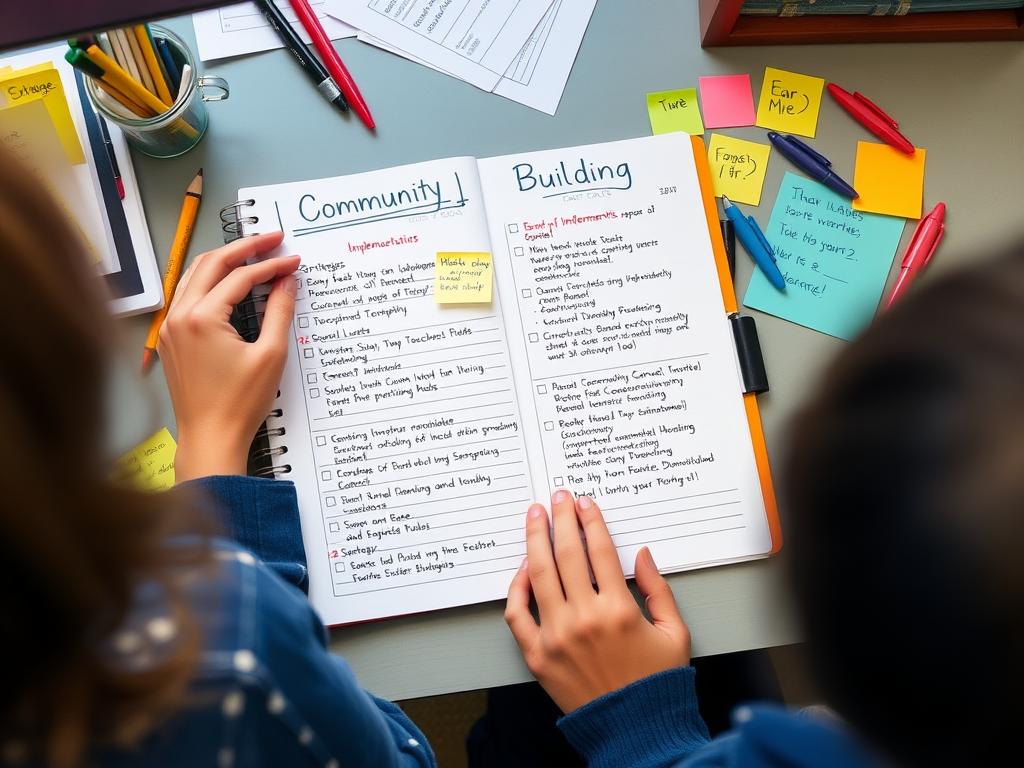
Start Small and Build
Rather than implementing all eight strategies at once, choose one or two that align with your current classroom management needs. As these become routine, gradually incorporate additional community building practices.
Be Consistent
Community building is most effective when practices are implemented consistently. Schedule specific times for community-building activities and protect these moments from being sacrificed to academic pressures.
Model What You Expect
Demonstrate the communication skills, respect, and engagement you hope to see from students. Your modeling is a powerful teacher skill that shapes classroom culture.
Reflect and Adjust
Regularly assess the effectiveness of your community building efforts. Seek student feedback and be willing to adapt approaches to better meet the needs of your specific classroom community.
Effective implementation requires ongoing professional development in areas like social-emotional learning, culturally responsive teaching, and positive classroom management. These investments in your teacher skills will pay dividends in classroom culture and student outcomes.
Building Your Classroom Community: Next Steps
Community building is both an art and a science—it requires intentional planning, consistent implementation, and responsive adaptation. The strategies outlined in this article provide a foundation for creating a classroom where students feel valued, connected, and engaged in learning.
Remember that strong classroom communities don’t develop overnight. Each small investment in community building contributes to a classroom culture where effective learning can flourish. As you implement these strategies, you’ll not only enhance your classroom management skills but also create more meaningful and rewarding teaching experiences.
Enhance Your Community Building Skills
Ready to take your classroom community to the next level? Our professional development courses provide in-depth strategies, practical resources, and teacher credits—all designed to support your growth as an educator.
By investing in community building strategies, you’re not just improving classroom management—you’re creating the conditions where all students can thrive academically, socially, and emotionally. That’s the true power of classroom community.
“The most effective teachers understand that academic success begins with strong relationships and a sense of belonging. Community building isn’t separate from teaching—it’s the foundation that makes great teaching possible.”
— Dr. Elena Aguilar, Educational Consultant
What community building strategies have been most effective in your classroom? Which of these eight approaches will you implement first? Your journey toward a stronger classroom community begins with a single intentional step.
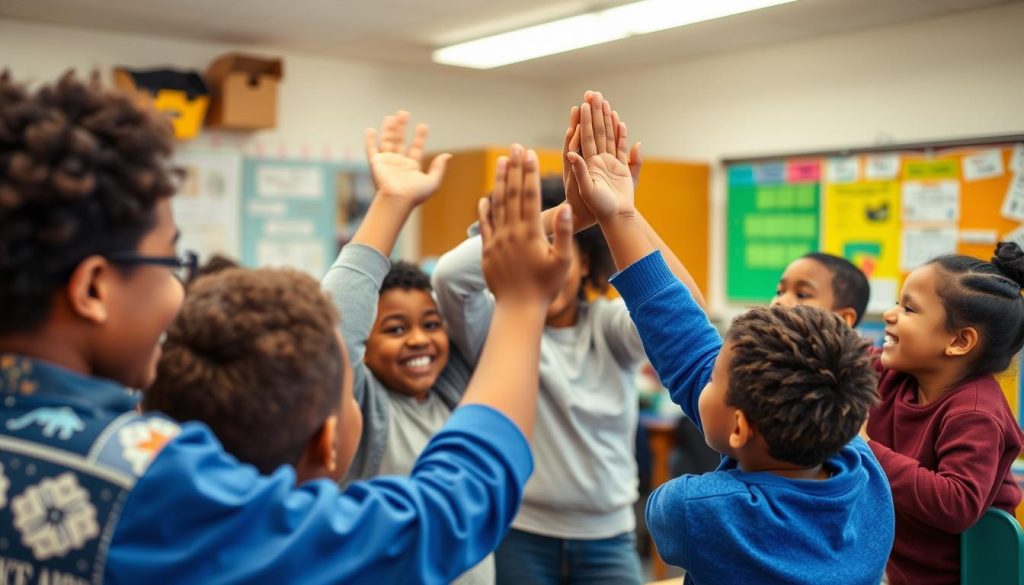
Strong classroom communities create joyful, effective learning environments

